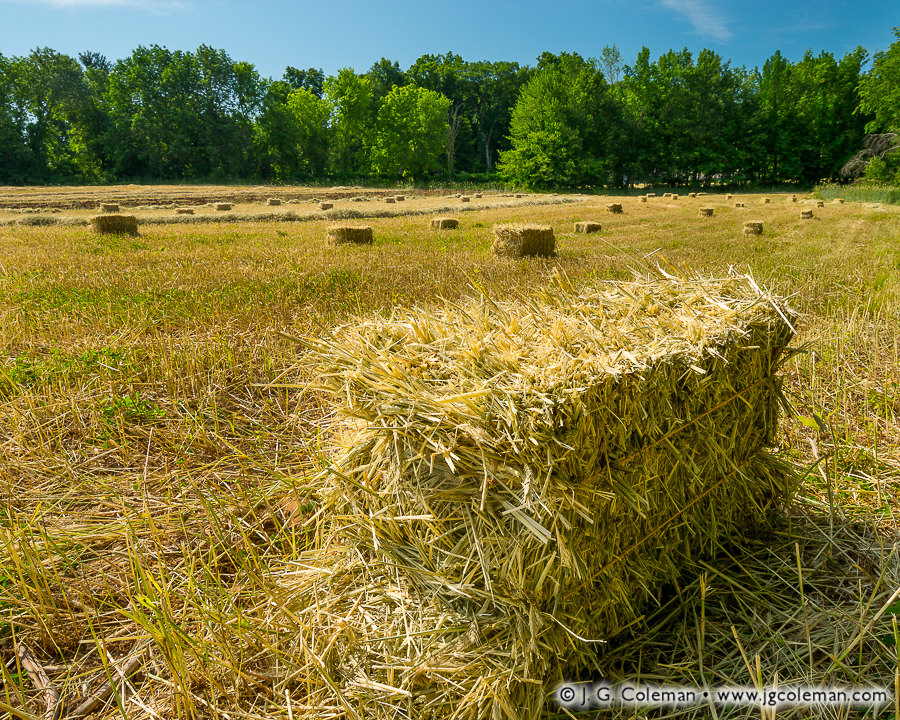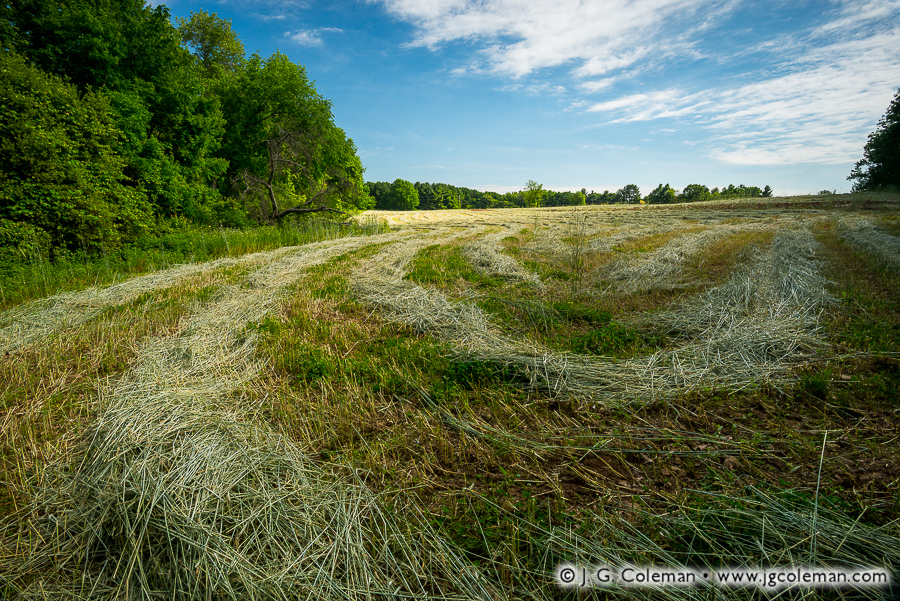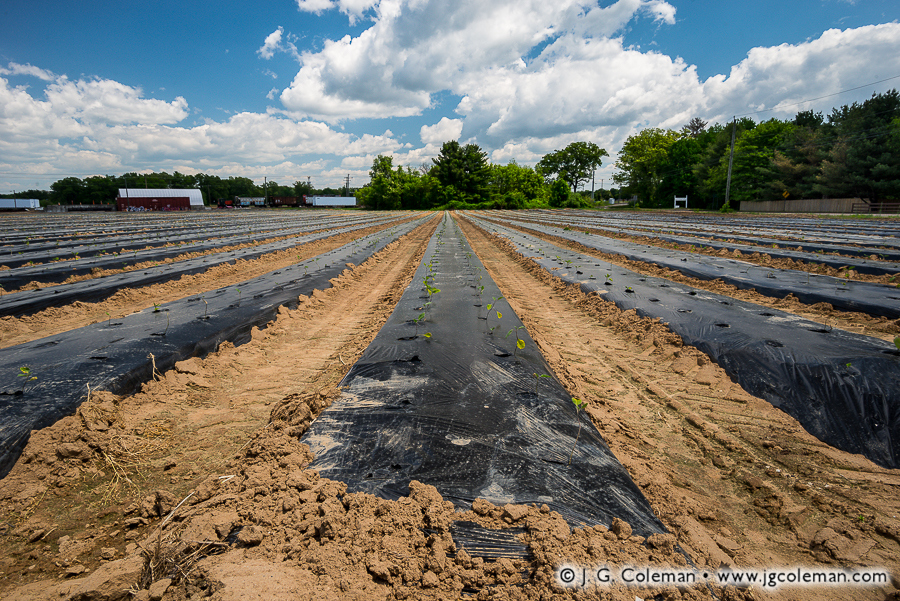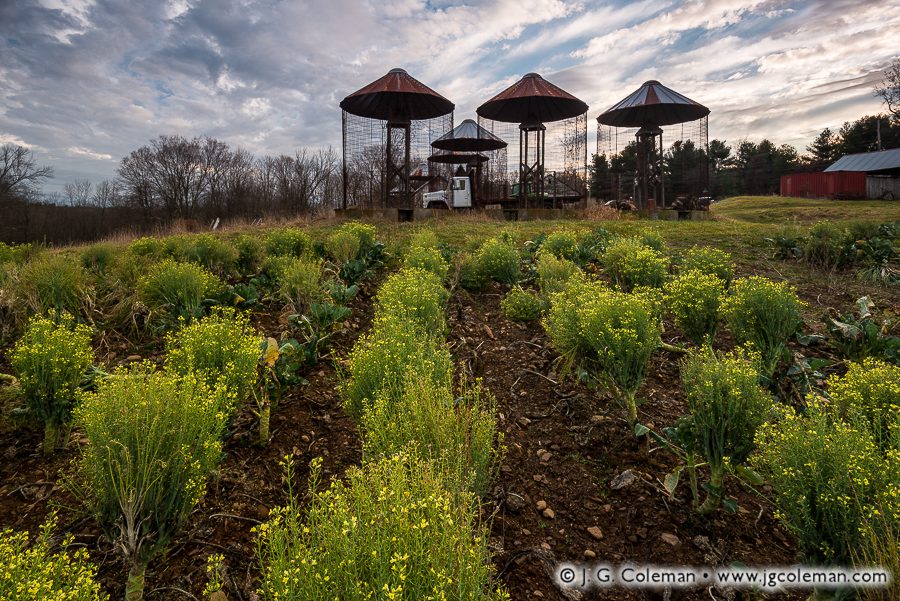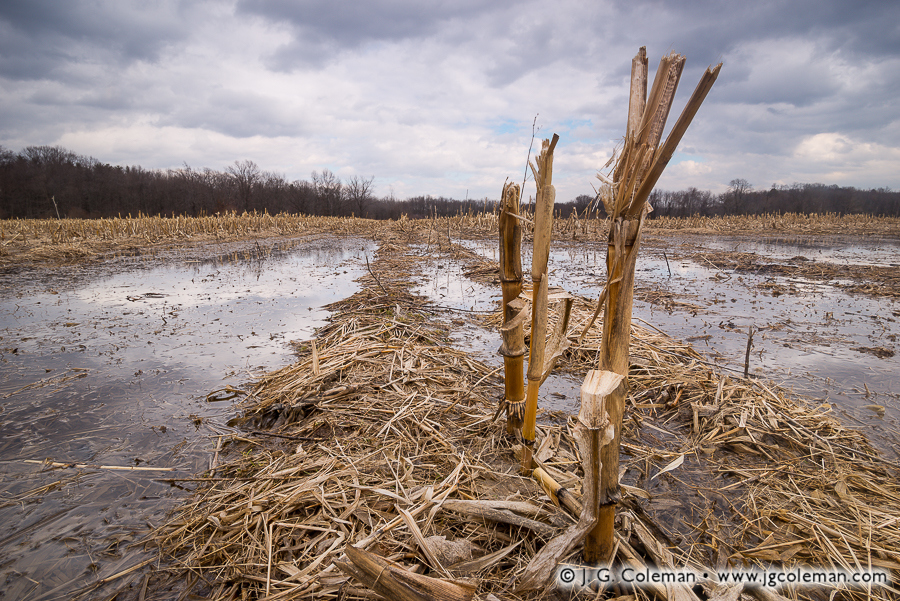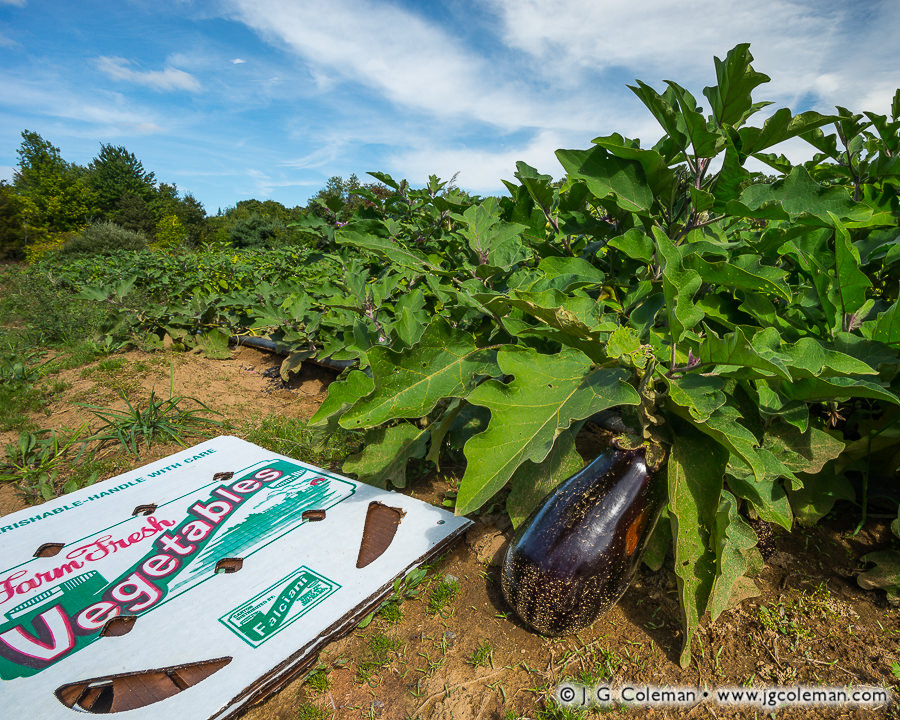
Field of eggplant and produce box, Bloomfield, Connecticut
© 2016 J. G. Coleman
As the final days of September approach, this leafy field of eggplant rears its final crop of ripened vegetables. A waxy produce box, honest in its “farm fresh” claim, lays beside the field in wait for the harvest.
It’s not uncommon that farm fields might be planted with dramatically different crops from one season or year to the next. For one thing, this practice ensures that the nutrients important to a given type of crop aren’t exhausted from the soil disproportionately. Sometimes, the motivation may be purely monetary: the old crop just isn’t fetching the same profit as it once did.
This particular field had been dedicated to shade tobacco for years before being planted with eggplant instead. And, although it surely had no bearing on the decision to switch crops, it’s interesting to note that eggplant contains more nicotine than any other vegetable. Strange, right? But no worries, you’d need to eat nearly 30 pounds of eggplant parmesan to consume the same amount of nicotine found in just one cigarette.
Purchase a Fine Art Print or Inquire About Licensing
Click here to visit my landing page for “Yankee Farmlands № 84” to buy a beautiful fine art print or inquire about licensing this image.
Want to See More?
Be sure to check out all of the work in my on-going Yankee Farmlands project.


